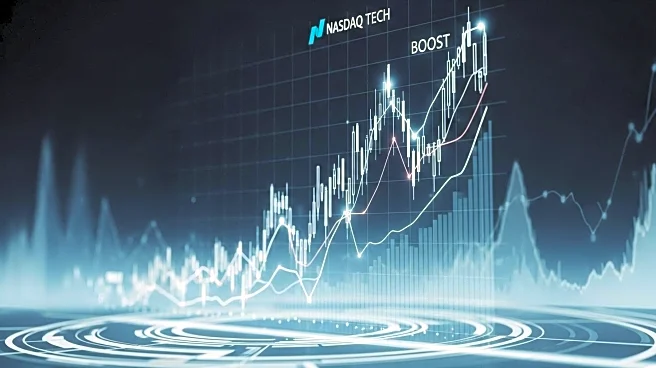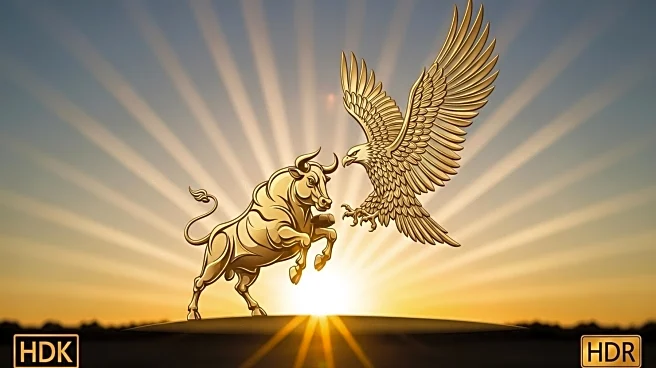What's Happening?
Gold prices have surged to a new record high, driven by investor expectations of further rate cuts by the Federal Reserve. Spot gold increased by 1.1% to $3,723.81 per ounce, with U.S. gold futures for December delivery climbing 1.4% to $3,758.40. This rise comes as several Federal Reserve officials, including Chair Jerome Powell, are set to speak this week, potentially providing insights into future monetary policy. The market is also anticipating the release of U.S. core personal consumption expenditure price data, which could influence the pace of rate cuts. The Fed recently lowered rates by 25 basis points, marking the first cut since December, and investors are predicting additional cuts in October and December.
Why It's Important?
The surge in gold prices reflects broader economic and geopolitical uncertainties, as well as shifts in monetary policy. Gold is traditionally seen as a safe haven during times of economic instability, and its rising value indicates investor concerns about future economic conditions. The Federal Reserve's openness to further rate cuts suggests a cautious approach to economic growth, which could impact various sectors, including banking and consumer spending. Additionally, the increased interest in gold from Western investors, alongside central bank purchases, highlights changing dynamics in global investment strategies.
What's Next?
Investors will closely monitor upcoming speeches by Federal Reserve officials and the release of key inflation data for further indications of monetary policy direction. The anticipated rate cuts could continue to drive gold prices higher, with predictions of reaching $3,900 by mid-2026. This trend may influence investment strategies and economic forecasts, as stakeholders adjust to potential changes in interest rates and inflation.
Beyond the Headlines
The shift in gold investment patterns, with increased interest from Western investors, suggests a broader reevaluation of asset allocation in response to monetary policy changes. This could lead to long-term shifts in investment strategies, as stakeholders seek to balance risk and return in an uncertain economic environment.










